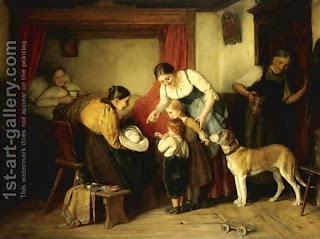Shemot - Childbirth

As we mentioned before, there are seventy ways to interpret the Torah, one of them is that Exodus is parallel to the soul being sent to Earth for spiritual growth. Another way is to view Exodus as an allegory of actual childbirth. Thus, the Ten Plagues become a parallel to this also.
The first of the plagues was the water of the Nile turning into blood, and similarly the beginning of birth is signaled by the breaking of the waters, which may also contain some blood. Without this, the child might suffocate. In the spiritual world blood is often connected to the Evil Impure forces, the power of which needs to be broken for the process of redemption to begin.
Then came the plague of the frogs (צפרד"ע), which can be read as (צפר ד"ע), meaning the “bird” (צפר), or the “voice” of 70 (ד"ע). These correspond to the seventy screams of birth, and to the seventy words in the psalm “God will answer me in the time of distress”.
The plague of darkness corresponds to the baby's distress during birth, when it begins to perceive itself as going from light to darkness.
Finally, the plague of the killing of the firstborn corresponds to a great number of evil forces that surround the child the at time of birth, all being killed. Still, the major Evil Urge remains alive. This is the meaning of the phrase, “And the first baby that came out was red, all covered with hair,” - first comes the Evil Urge. That is also the meaning of Pharaoh remaining alive of all the firstborn of Egypt. God wants man to be fighting with his evil inclination for the first thirteen years of his life, until the Good Inclination joins him at thirteen and one day.
The time of Redemption (birth) is the spring month of Nisan, when the "Ma'adim" (Red, or Mars) star achieves prominence. The seven stars (planets) are abbreviated as שצ'ם חנכל, the letter mem (ם) stands for Ma'adim.
Art: Nicholas Gysis - New Arrival